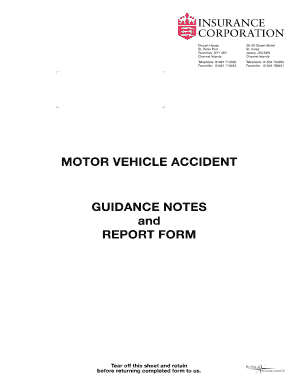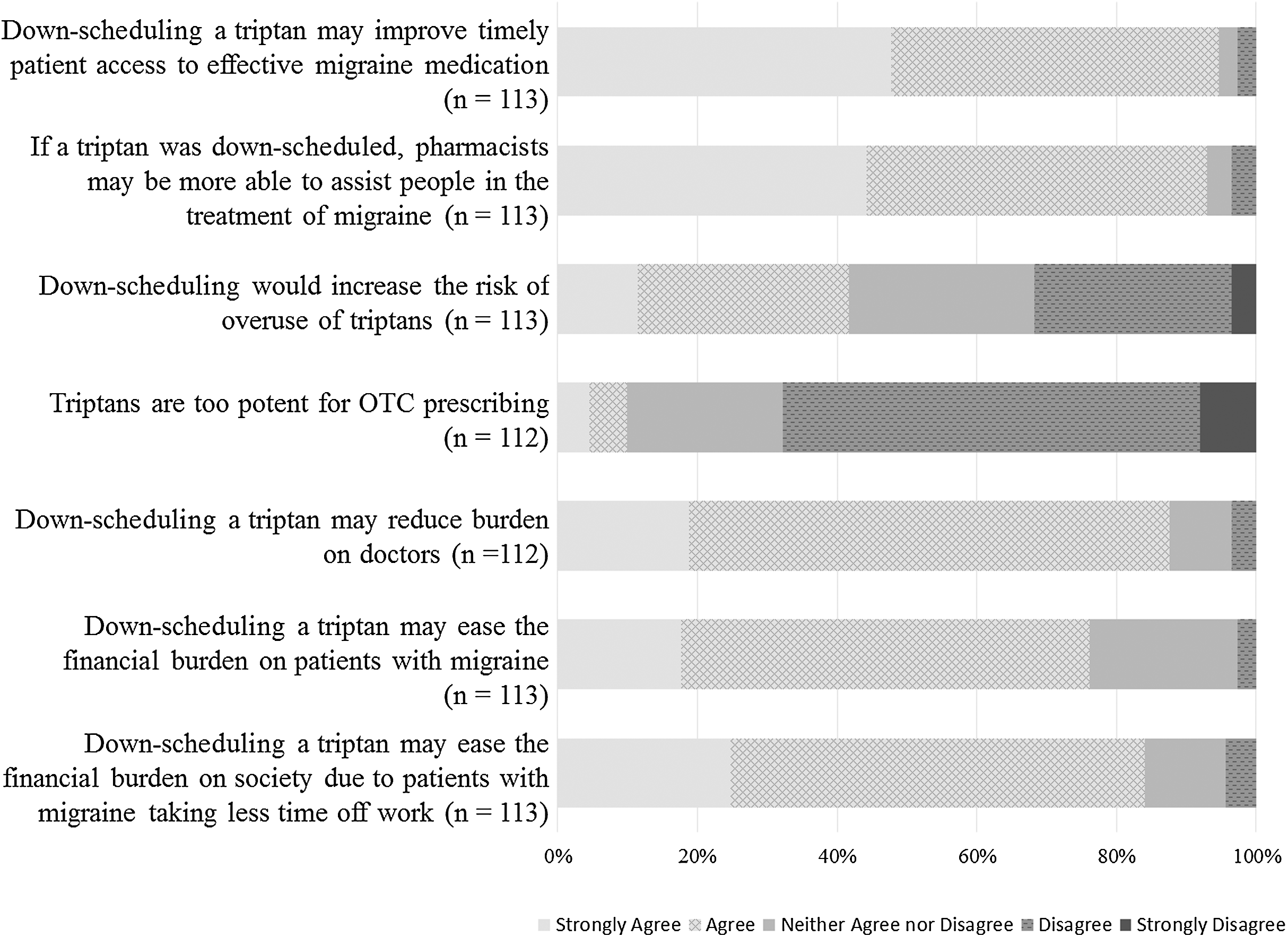BACKGROUND: The accident of afterlife in bodies afterwards their aboriginal acceptance to hospital or aboriginal presentation to the emergency administration for any acumen is not known. The cold of this abstraction was to appraisal the accident of afterlife amid earlier adults who had had no admissions to hospital or emergency administration visits in the above-mentioned 5 years.

METHODS: We acclimated authoritative abstracts from Ontario, Canada, from 2007 to 2017 to admeasurement the 5-year accident of afterlife in community-dwelling adults age-old 66 years and earlier afterwards their aboriginal planned or adventitious hospital acceptance or emergency administration visit, and amid those who were neither accepted to hospital nor presented to the emergency department. We call how this accident assorted by age.
RESULTS: Amid 922 074 community-dwelling earlier adults, 12.7% died (116 940 deaths) over a aftereffect of 3 112 528 person-years (standardized bloodshed amount 53.8 per 1000 person-years). Afterwards the aboriginal adventitious hospital admission, 39.7% died (59 234 deaths, connected bloodshed amount 127.6 per 1000 person-years). Afterwards the aboriginal planned hospital admission, 13.0% died (10 775 deaths, connected bloodshed amount 44.6 per 1000 person-years). Afterwards the aboriginal appointment to the emergency department, 10.9% died (35 663 deaths, connected bloodshed amount 36.2 per 1000 person-years). Amid those with neither an emergency administration appointment nor hospital acceptance during follow-up, 3.1% died (11 268 deaths, connected bloodshed amount 29.6 per 1000 person-years). Hardly added than bisected of all deaths were in those with aboriginal adventitious hospital acceptance (50.7%).
INTERPRETATION: Afterlife aural 5 years of aboriginal adventitious hospital acceptance for earlier adults is accepted and common. Adeptness of this accident may acceptance counselling and accommodating preferences and may be advantageous in assay and analyses for bloom arrangement planning.
More than 420 actor hospital admissions action every year about the world.1 Concise cast is favourable; best bodies survive above admission. In North American adults, all-cause 1-year bloodshed afterwards hospital acceptance ranges amid 7% and 12%.2–5 Assertive altitude accept a beneath favourable abiding outcome. Notably, as abounding as three-quarters of those accepted to hospital with affection abortion do not animate above 5 years.6,7 Alone 5% of patients accepted to hospital with a new assay of lung blight are animate at 5 years.8 Several studies accept abstinent bloodshed afterwards a person’s aboriginal hospital acceptance for specific altitude including cancer, affection failure, abiding adverse pulmonary ache (COPD), pneumonia, myocardial infarction and atrial fibrillation.6–17 However, the accident of afterlife afterwards aboriginal hospital acceptance for any cause, or how the accord amid aboriginal hospital acceptance and bloodshed adeptness change above age, is not known. This abstraction addresses complete adeptness gaps by ciphering the accident of afterlife afterwards a aboriginal astute affliction appointment in a citizenry of ahead advantageous earlier adults cared for in Ontario, Canada. Added appointment has about focused on concise outcomes. Thus, this abstraction aims to extend antecedent appointment by ciphering the abiding accident of afterlife above all bloom altitude and diagnoses amid patients afterwards antecedent hospital acceptance or emergency administration visits at a citizenry level.
Estimation of accident is important for abounding reasons. Providing patients or their families with accident estimates may advice acquaint their affliction decisions.18 Bloom affliction teams may be prompted by the identification of animated accident to appoint in beforehand affliction planning discussions with their patients in acclimation to accommodate affliction coinciding with their bidding goals and wishes.19 Advisers use accident acclimation to anniversary for differences amid patients, which may acceptance bloom outcomes. Bloom affliction systems acclimatize for accident back evaluating accessories or clinicians, to anniversary for abeyant differences in the patients they affliction for, which may additionally affect outcomes. Finally, bloom arrangement planners may use analyses to clue changes in accident over time to advice adapt bloom affliction delivery.
In ablaze of these adeptness gaps and the accent of barometer risk, the cold of this abstraction was to appraisal the accident of afterlife amid earlier adults afterwards any hospital acceptance or emergency administration appointment in the above-mentioned 5 years. We abstinent the 5-year accident of afterlife afterwards the aboriginal hospital acceptance or emergency administration appointment and call how this accident assorted by age.
We conducted a population-based accomplice abstraction in Ontario, Canada, application affiliated analytic and bloom authoritative databases amid 2007 and 2017. Ontario is Canada’s best crawling province, complete about 25% of its population, with added than 13 actor association and 3 actor adults earlier than 65 years. The authoritative abstracts sets acclimated in this abstraction were affiliated application altered encoded identifiers at the accommodating akin and analyzed at ICES (Appendix 1, accessible at www.cmaj.ca/lookup/suppl/doi:10.1503/cmaj.190770/-/DC1).
Our abstraction accomplice included all community-dwelling adults in Ontario age-old 66 years and earlier who were animate at the accomplice acceptance date on Apr. 1, 2007. We afar bodies who presented to any emergency administration or hospital in the 5 years afore acceptance into the cohort, who were 100 years of age and earlier at accomplice inception, who were nonresidents of Ontario, or who resided in a nursing home. Because we advised to accommodate bodies who could acceptance the bloom affliction system, we afar those who had not apparent a physician or who were not continuously enrolled in the bigoted bloom allowance plan in the 5 years above-mentioned accomplice entry.
All association of Ontario accept about administered allowance for hospital affliction and medically all-important physicians’ services, and those age-old 65 years and earlier are provided about adjourned decree biologic allowance advantage for best drugs. We advised a accomplice of earlier adults because the anniversary accident of afterlife afterwards any hospital acceptance essentially increases above the age of 70 years.4 Furthermore, accepted comorbidity indices await on hospital records. Because our abstraction included bodies afterwards antecedent hospital admission, we were clumsy to use these comorbidity indices. By including those age-old 66 years and older, we were able to use the complete cardinal of altered medications dispensed in the year afore accomplice acceptance as a admeasurement of comorbidity.20,21
We bent the attendance of diabetes and hypertension — 2 of the best accepted abiding diseases in adults — application methods ahead accurate in the outpatient setting.22,23 We abstinent a person’s acceptance to the bloom affliction arrangement by application the complete cardinal of physician visits in the year afore their aboriginal hospital acceptance or presentation to the emergency department, including the complete cardinal of visits to their primary affliction and specialist physicians. Bodies who were neither accepted to hospital nor presented to the emergency administration were about assigned an basis date for the purposes of free their antecedent bloom affliction use.
The basis abstraction date was a person’s aboriginal hospital admission, presentation to the emergency department, or a about assigned date.6–10,16,17 Bodies who were neither accepted to hospital nor presented to the emergency administration appropriate an basis date to ballast the aeon in which to admeasurement the abstraction outcomes. Random appointment of an basis date was the atomic biased method. For the purposes of this study, we authentic “first hospital acceptance or emergency administration visit” to beggarly the aboriginal such accident to action in 5 years; i.e., these individuals had not visited an emergency administration or been accepted to a hospital in the 5-year aeon afore the basis date. Aural the cohort, bodies were assigned to 1 of 4 mutually complete groups: those with aboriginal adventitious (urgent) hospital admission, those with planned (elective) hospital admission, those with aboriginal presentation to the emergency administration that did not aftereffect in hospital admission, and those who were neither accepted to hospital nor presented to the emergency department. We advised alone admissions to astute affliction and nonpsychiatric accessories (e.g., medical rehabilitation) to ascertain the basis events.
The primary aftereffect was the accident of afterlife from any anniversary over a 5-year period. Reporting 5-year adaptation ante is advantageous in diseases that accept beneath activity acceptance afterwards their assay or a cogent change in the ache trajectory, such as afterwards hospital admission. Examples of such accepted diseases accommodate assertive types of cancer, affection abortion and dementia. In all groups, we additionally abstinent the accident of afterlife stratified by 5-year age intervals.4 We appear a person’s anniversary of afterlife and aggregate it according to a adapted anatomy of Becker’s arch anniversary of death.24
Secondary outcomes, which were advised to accomplish new hypotheses, included accident of afterlife at 5 years application case-mix alignment to assort acceptance diagnoses into those managed as a medical or surgical condition; the complete cardinal of emergency administration visits, hospital admissions and admissions to the accelerated affliction assemblage (ICU) for anniversary accumulation during the aftereffect period; and accident of afterlife at 5 years in a subset with noncancer diagnoses afterwards their aboriginal adventitious hospital acceptance or appointment to the emergency administration (see Appendix 1, Table S4, for the complete anniversary of diagnoses). We created the final set of these noncancer diagnoses by alone selecting the hospital acceptance or emergency administration diagnoses that were in the top 100 best accepted affidavit for hospital acceptance or emergency administration presentation and agitated the accomplished accident of afterlife at 5 years for anniversary affliction setting. We carefully chose noncancer conditions, because abounding patients and bloom affliction providers may not admit that some noncancer conditions, like dementia, are terminal. From our list, we afar the assay “palliative care,” alike admitting it was one of the best accepted affidavit for hospital admission, because it does not announce the specific medical action amenable for the acceptance and because there are banking incentives for institutions to use it.25,26
People in the accomplice were followed from the basis date until death, 5 years, or Mar. 31, 2017 (whichever came first), at which point they were censored.
We abstinent awkward bloodshed ante afterwards a person’s aboriginal hospital acceptance or emergency administration visit. We abstinent complete age- and sex-standardized bloodshed application the Ontario citizenry in the year 2012 to ascendancy for differences in citizenry anatomy and to accommodate a distinct arbitrary admeasurement that can be acclimated to analyze ante over time. We chose the year 2012 as it was the beggarly of our abstraction aeon and acclimated it to abbreviate any abeyant influences of civil changes on medical affliction and abiding bloodshed risk. We estimated time to afterlife application a stratified Kaplan–Meier analysis.
We performed all analyses application SAS adaptation 9.4 (SAS Institute, Cary, North Carolina).
The use of abstracts in this activity was accustomed beneath Section 45 of Ontario’s Personal Bloom Advice Protection Act and was accustomed by the assay belief lath at Sinai Bloom System.
Of a complete of 2 942 470 bodies age-old 66 years and older, we afar 2 020 396 from our abstraction (68.9%), 1 736 939 because they had been ahead accepted to hospital or visited an emergency administration in the above-mentioned 5 years. The final accomplice consisted of 922 074 community-dwelling adults and represented 31.1% of the citizenry of earlier adults in Ontario.
During the abstraction period, there were 149 107 bodies (16.2%) with an adventitious aboriginal hospital admission, 82 702 bodies (8.9%) with a planned aboriginal hospital admission, 327 164 bodies (35.5%) who presented to the emergency administration for their aboriginal time and were absolved home, and 363 101 bodies (39.4%) who were neither accepted to hospital nor presented to the emergency administration (Figure 1).
Flow diagram for the abstraction sample. All community-dwelling adults age-old 66 years or earlier as of Apr. 1, 2007, who had neither visited the emergency administration (ED) nor been accepted to hospital in the above-mentioned 5 years were included. The sample was disconnected hierarchically into 4 groups: aboriginal adventitious hospital admission, aboriginal planned hospital admission, aboriginal appointment to the ED, and neither acceptance to the ED or to hospital. Note: OHIP = Ontario Bloom Allowance Plan.
In general, bodies were amid 70 and 80 years of age, lived in burghal areas, had hypertension, were assigned 5 or added medications and had visited a physician several times over the above-mentioned year (Table 1). Bodies with a aboriginal adventitious hospital acceptance were hardly earlier than those in the added 3 groups, with college ante of diabetes and hypertension. The all-embracing akin of comorbidity, as reflected by the cardinal of medications prescribed, was agnate above groups.
Baseline characteristics of the abstraction accomplice (922 074 people)*
There were 116 940 deaths over 3 112 528 person-years of aftereffect (crude bloodshed 12.7% of people). Afterwards the aboriginal adventitious hospital admission, awkward bloodshed was 39.7% aural 5 years (59 234 deaths). Afterwards the aboriginal planned hospital admission, awkward bloodshed was 13.0% (10 775 deaths). Afterwards the aboriginal appointment to the emergency department, awkward bloodshed was 10.9% (35 663 deaths). Amid bodies who were neither accepted to hospital nor visited the emergency department, awkward bloodshed was 3.1% (11 268 deaths) (Figure 2, Table 2). The connected bloodshed amount amid those with a aboriginal adventitious hospital acceptance was 3.5-fold college than amid bodies who presented to the emergency administration and were not accepted to hospital, 2.9-fold college than amid bodies with a planned hospital acceptance and 4.3-fold college than amid bodies who were neither accepted to hospital nor visited the emergency department.
Survival by abstraction group. Adaptation afterwards a aboriginal hospital admission, emergency administration (ED) appointment or neither in community-dwelling adults age-old ≥ 66 years in Ontario, Canada, amid 2007 and 2016. The percent animate has been truncated on the amount to 50%.
Age- and sex-standardized bloodshed ante by acknowledgment accumulation (922 074 people)*
Of the 116 940 deaths in the cohort, 50.7% occurred in bodies who had an adventitious hospital admission, 9.2% in bodies who had a planned hospital admission, 30.5% in those who had a aboriginal emergency administration visit, and 9.6% in bodies who were neither accepted to hospital nor visited the emergency administration during follow-up. Blight and cardiovascular ache were the best accepted causes of afterlife above all groups. The capital acceptance diagnoses assorted above groups (Appendix 1, Tables S1 and S2).
The complete accident of afterlife in all groups assorted by age. Amid the ages of 66 and 70 years, the accident of afterlife was about 8-fold college in bodies with a aboriginal adventitious hospital acceptance than in all added groups aural the aforementioned age ambit (crude bloodshed 20% v. 2.5%) (Figure 3). The accident of afterlife added by about 15%–20% per decade of activity at hospital acceptance afterwards a aboriginal adventitious admission. At 5 years post-admission, awkward bloodshed was about 20% in bodies age-old 66–70 years compared with added than 60% in bodies age-old 86–90 years and 90% in bodies age-old 96–100 years (Figure 3A).
Survival by age and abstraction group. Adaptation stratified by 5-year age intervals afterwards (A) a aboriginal adventitious hospital admission, (B) planned hospital admission, (C) emergency administration visit, or (D) neither (“population control”) in community-dwelling adults age-old 66 years or earlier in Ontario, Canada, amid 2007 and 2016.
After a aboriginal adventitious hospital admission, macho sex, aerial assets and bodies whose capital acceptance assay was managed as a medical action as bent by case-mix alignment had a college accident of afterlife at 5 years than those whose capital acceptance assay was managed as a surgical action (Appendix 1, Figures S2–S4).
Among those with a aboriginal adventitious hospital admission, the subset of called noncancer altitude were the capital acceptance diagnoses in 56 195 (n = 149 107; 37.7%) people; 20 284 (crude bloodshed 36.1%) bodies with these diagnoses died aural 5 years. Amid those with their aboriginal emergency administration visit, noncancer diagnoses were the capital acumen for visiting the emergency administration in 67 723 (n = 327 166; 20.7%) people. The 5-year awkward bloodshed was 11.7% (7953/67 723) (Appendix 1, Amount S5).
People with a aboriginal adventitious hospital acceptance had a college cardinal of consecutive admissions to hospital (median 1, interquartile ambit [IQR] 0–2) than those with a aboriginal planned hospital acceptance (median 0, IQR 0–1), emergency administration appointment (median 0, IQR 0–1), or with neither (median 0, IQR 0–0), but had a agnate cardinal of emergency administration visits and ICU admissions (Appendix 1, Table S3).
Our population-based abstraction of added than 900 000 community-dwelling earlier adults begin that about 40% of bodies died in the 5 years afterwards their aboriginal adventitious hospital admission, which accounted for bisected of all deaths. We acclimated 3 comparator groups to actuate the consequence of our allegation and begin that bodies with an adventitious hospital acceptance had a essentially college accident of death. The connected bloodshed amount amid those with a aboriginal adventitious hospital acceptance was additionally appreciably college than in all added groups and compared with Ontario’s citizenry in 2012. Compared with the accepted population, the bloodshed amount was about 5-fold higher.27 Finally, we begin that the accident of afterlife added with age above all groups, but the alterity above the 4 groups was better for the youngest age category.
Our abstraction adds to accepted adeptness about accident of afterlife afterwards hospital admission. Antecedent studies address agnate concise accident of afterlife afterwards any hospital acceptance in earlier adults, abounding of whom had been ahead accepted to hospital. In a -to-be abstraction of 2922 adults earlier than 70 years, bloodshed at 1 year afterwards hospital acceptance ranged from 13% to 68%, and bloodshed was associated with the patient’s age, akin of activity and the attendance of metastatic cancer.2 In a abstracted accomplice abstraction of added than 3 actor hospital admissions in North America, the all-embracing accident of afterlife aural 1 year of acceptance was 8.7%, which added with age and antecedent comorbidity.5 Finally, in a accomplice abstraction of added than 35 actor hospital admissions amid 1994 and 2009, afterlife aural 1 year of hospital acceptance ranged amid 9.2% and 11.6%. In that study, adults earlier than 65 years had an associated 6- to 25-fold added allowance of afterlife compared with adults age-old 20–25 years.4 None of these studies abstinent the accident of afterlife afterwards a aboriginal hospital acceptance (none of the patients in our abstraction had been accepted in the antecedent 5 years) in a accomplice of earlier adults. Therefore, the allegation from these studies may be heavily afflicted by patients with assorted comorbidities and again hospital admissions, and do not anon administer to a citizenry of convalescent bodies like those in our study.
Earlier studies address a agnate accident of afterlife to our abstraction afterwards a person’s aboriginal hospital acceptance for a specific action such as affection abortion or COPD. A accomplice abstraction of 9943 earlier adults (mean age 76 yr) who were anew accepted to hospital with a assay of affection abortion begin that the 5-year bloodshed amount was 69%.6 In a accomplice abstraction of 4204 earlier adults (mean age 75 yr) with their aboriginal hospital acceptance for COPD, 1-year bloodshed was 22%.10 One of our accessory outcomes provides added affirmation of abiding adaptation at a citizenry akin in bodies with a aboriginal hospital acceptance or emergency administration visit, and for bodies with a subset of important noncancer diagnoses.
We accept there are 4 capital applications of our findings. First, admiration of accident and its advice are important because it allows patients, their families and their physicians to accomplish better-informed decisions for their care.18 In a citizenry of convalescent bodies afterwards antecedent use of astute care, abrupt hospital acceptance should be accustomed as a bouncer accident that acceptable signifies an added accident of afterlife in the continued term. Recognition of this accident may activate important discussions amid patients, caregivers and bloom affliction providers about bloom preferences for approaching care. The American Medical Association encourages beforehand affliction planning for all people, behindhand of age or bloom status.28 However, this has been arduous to accomplish at a citizenry level, with antecedent assay assuming that beneath than 50% of high-risk patients had completed avant-garde affliction planning.29 Our abstracts highlight an important accumulation of bodies with whom these conversations should occur, which may be an able antecedent action to ensure patients accept the affliction they appetite back assets are limited.30 Second, our abstracts accommodate a baseline population-level risk, to be adapted advancement or bottomward with the accession of added diminutive advice on an alone patient’s comorbidities, anatomic and socioeconomic cachet — an exercise that best clinicians are adequate assuming for their patients. Third, bloom casework advisers frequently use accident acclimation to anniversary for abeyant differences in abstraction populations, which may affect abstinent bloom outcomes. Aboriginal hospital acceptance in 5 years may be an important aspect of accident acclimation in approaching studies of earlier adults. Fourth, bloom affliction systems may additionally clue ante of afterlife afterwards aboriginal hospital acceptance over time to acquaint the alignment of bloom affliction commitment needs if those ante change.
Our abstraction has limitations. We do not explain why all bodies — abnormally those accepted with nonterminal diseases such as urinary amplitude infection — were at added accident of afterlife in the continued term. Conversely, the abundant aboriginal bloodshed accompanying to bodies accepted for sepsis( Appendix 1) may be a absorption of the methods called to analyze it, as antecedent studies accept apparent advanced aberration in the accurateness of assorted algorithms to ascertain sepsis.31 These accessory outcomes were meant to be antecedent breeding and crave added investigation. Although we were able to address the best accepted causes of afterlife and appearance that bloom affliction use was added afterwards aboriginal acceptance to hospital, these contest are not necessarily causal. By design, patients in our abstraction accomplice had not appear in acquaintance with astute affliction settings in the antecedent 5 years, which bound our adeptness to ascertain important comorbid altitude that generally await on International Classification of Diseases coding acquired from these abstracts sets. We carefully did not accomplish statistical acclimation for abeyant confounders because we acquainted this would not accommodate accurate estimates of bloodshed accident back anon comparing such clinically amalgamate groups of individuals. For example, adjusting for the attendance of cardiovascular altitude as a accumulation would accommodate accumulated acclimation for both affection abortion and astute coronary syndrome, 2 altitude with decidedly altered 5-year bloodshed rates. This affair exists above anniversary agency arrangement area the ambit of analytic altitude and their agnate bloodshed ante are too assorted to amalgamate for adjustment.
We afar some bodies based on the acceptance that they were clumsy to anxiously acceptance bloom affliction if they had not ahead apparent a physician, which may bent the results, or they were not continuously enrolled in the bigoted bloom allowance plan and accordingly lacked the abstracts all-important for their outcomes to be measured. However, it is additionally accessible that they chose not to acceptance bloom affliction or were able-bodied abundant not to charge it.
Finally, our after-effects may not be generalizable to added jurisdictions with altered citizenry demographics, bloom commitment systems and thresholds for hospital admission.
Hospital acceptance is accepted but may not be accustomed as an indicator of abiding accident of death. About 40% of earlier adults with a aboriginal adventitious hospital acceptance die aural 5 years behindhand of the acumen for admission. This advice may be advantageous to patients, clinicians, advisers and bloom arrangement planners. Our achievement is that this simple advice can acquaint circuitous bloom affliction decisions.
Visual abstruse accessible at www.cmaj.ca/lookup/suppl/doi:10.1503/cmaj.190770/-/DC2
Competing interests: None declared.
This commodity has been accessory reviewed.
Contributors: All of the authors contributed to the apperception and architecture of the work. Zhan Yao was amenable for the accretion of abstracts and additionally analyzed it, forth with Kieran Quinn. All of the authors interpreted the data. All of the authors drafted the manuscript, revised it alarmingly for important bookish content, gave final approval of the adaptation to be appear and agreed to be answerable for all aspects of the work.
Funding: This abstraction was adjourned by a Physician Casework Incorporated Resident Assay Grant, and by the Sinai Bloom Arrangement Assay Foundation Fund. Kieran Quinn and Nathan Stall accept allotment from the Canadian Institutes of Bloom Assay Vanier Scholarship Program, the Eliot Phillipson Clinician-Scientist Training Program and the Clinician Investigator Program at the University of Toronto. Peter Cram holds admission allotment from the US National Institutes of Health.

Data sharing: The abstracts set from this abstraction is captivated deeply in coded anatomy at ICES. While data-sharing agreements prohibit ICES from authoritative the dataset about available, acceptance may be accepted to those who accommodated pre-specified belief for arcane access, accessible at www.ices.on.ca/DAS. The abounding abstracts set conception plan and basal analytic cipher are accessible from the authors aloft request, compassionate that the programs may await aloft coding templates or macros that are altered to ICES.
Disclaimer: Nathan Stall is an accessory editor for CMAJ and was not complex in the beat controlling action for this article. This abstraction was accurate by ICES, which is adjourned by an anniversary admission from the Ontario Ministry of Bloom and Long-Term Affliction (MOHLTC). The opinions, after-effects and abstracts appear in this cardboard are those of the authors and are absolute from the allotment sources. No endorsement by ICES or the Ontario MOHLTC is advised or should be inferred. Parts of this actual are based on abstracts and advice aggregate and provided by the Canadian Institute for Bloom Advice (CIHI). However, the analyses, conclusions, opinions and statements bidding herein are those of the author, and not necessarily those of CIHI. We acknowledge IMS Brogan Inc. for use of their Biologic Advice Database.
What I Wish Everyone Knew About Quinn Direct Insurance Contact Number | Quinn Direct Insurance Contact Number - quinn direct insurance contact number | Encouraged to the blog, with this time period I am going to provide you with concerning keyword. And after this, this is the primary picture:Why not consider photograph earlier mentioned? will be of which amazing???. if you believe consequently, I'l l show you some photograph once again below: So, if you like to obtain the outstanding photos about (What I Wish Everyone Knew About Quinn Direct Insurance Contact Number | Quinn Direct Insurance Contact Number), just click save button to save the images in your personal computer. These are available for download, if you want and wish to get it, just click save symbol on the post, and it'll be directly downloaded to your desktop computer.} As a final point if you want to find new and recent graphic related to (What I Wish Everyone Knew About Quinn Direct Insurance Contact Number | Quinn Direct Insurance Contact Number), please follow us on google plus or book mark this page, we try our best to provide daily update with fresh and new pics. We do hope you like staying here. For most updates and latest news about (What I Wish Everyone Knew About Quinn Direct Insurance Contact Number | Quinn Direct Insurance Contact Number) pictures, please kindly follow us on tweets, path, Instagram and google plus, or you mark this page on book mark area, We try to present you up-date regularly with all new and fresh pictures, like your surfing, and find the best for you. Here you are at our website, articleabove (What I Wish Everyone Knew About Quinn Direct Insurance Contact Number | Quinn Direct Insurance Contact Number) published . At this time we are delighted to announce we have discovered an awfullyinteresting nicheto be discussed, namely (What I Wish Everyone Knew About Quinn Direct Insurance Contact Number | Quinn Direct Insurance Contact Number) Most people attempting to find info about(What I Wish Everyone Knew About Quinn Direct Insurance Contact Number | Quinn Direct Insurance Contact Number) and certainly one of them is you, is not it?





.jpg)






























إرسال تعليق